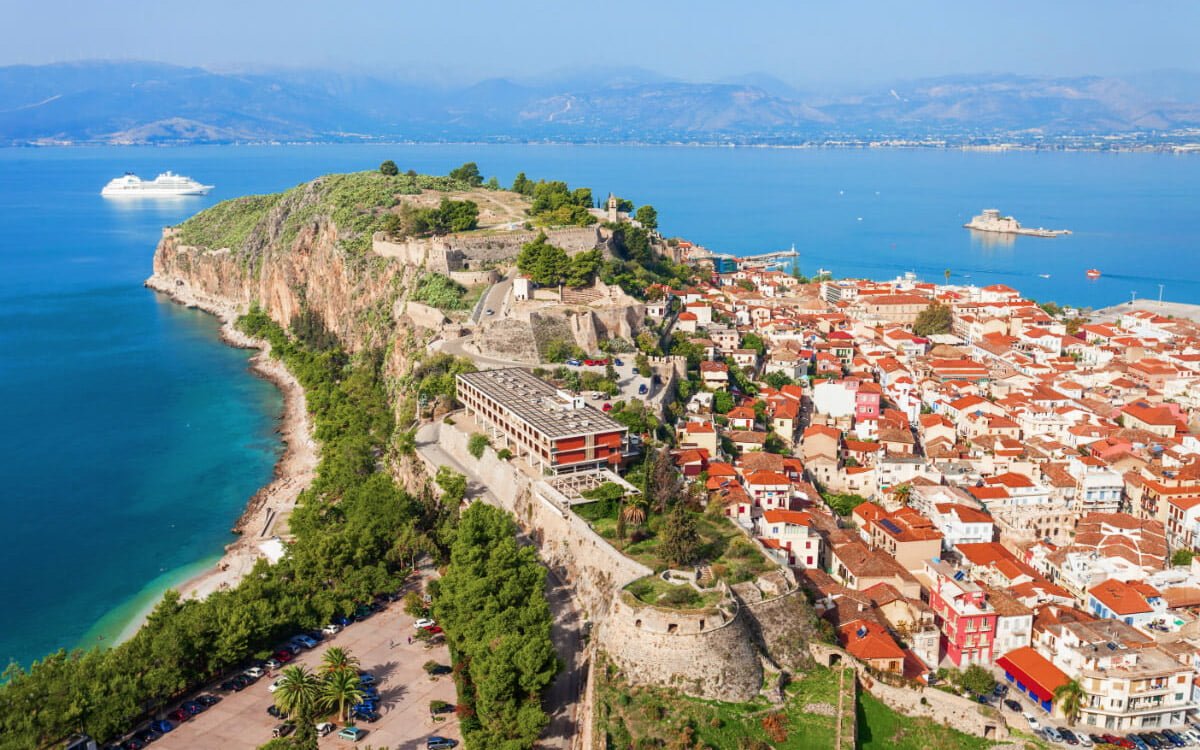Corinth, Mycenae, Nafplion and Epidaurus tour
Duration 10 hours
Private Tour & Shore Excursion
Price from €130
** Price is per person for a group of 3 passengers. Prices vary greatly depending on the number of people and type of vehicle. The final price will be calculated online using our booking engine.
This majestic private tour to Peloponnese will give the chance to visit the legendary Corinth canal and ancient Corinth, Mycenae with its famous civilization, the first hospital in the world “The Asklepieion of Epidaurus” and the picturesque Nafplio is an excellent choice just a few hours away from Athens! This tour is the same as THE PICTURESQUE CORINTH, MYCENAE, NAFPLION FULL DAY TOUR added a visit to the great theater of Epidaurus and 10 hours in the total tour!
Highlights of The Majestic 10-hour private tour to Argolis of Peloponnese
- The famous Corinth canal
- Ten-hour to the largest viticultural area of Greece, Corinth, Mycenae, Nafplion, and Epidaurus theater
- Experienced English-speaking tour driver
- Visit the famous Corinth canal & ancient Corinth
- Visit the Mycenaean Acropolis
- Learn for the production from a wine expert
- The picturesque graphical city on the water, Nafplion
- The most recognized with best acoustic theater in the world
Pass By: Morning drive through Athens and its surroundings passing by the towns of Megara (King Bizas where the Byzantium city “Constantinople” took its name from), Elefsina (Elefsinia mysteries), several resort towns like Ag. Theodoroi, Kineta…, till we reach the famous Corinth Canal! Our first pause the Corinth Canal. Finally opened in 1894, separating the Peloponnese Peninsula from the rest of Greece while connecting the Saronic Gulf (Aegean Sea) to the Corinthian Sea (Ionian Sea). You’ll have time to stretch your legs, walk across on a pedestrian bridge and admire the canal closer on some days bungee jumping is an option. Take spectacular pictures from the breathtaking bridge! Pass By: Continue our private tour traveling through the impressive landscape of western Peloponnese towards ancient Corinth. Ancient Corinth, located at the foot of the Corinth Acropolis hill Acrocorinth with its Venetian Castle, the oldest and largest castle in southern Greece, includes the Roman Agora of Corinth, the temple of God Apollo, and the small museum of the ancient Corinth Agora. Apart from its archaeological and historical interest through the site is also one of the most popular religious destinations of Greece. In this world-famous place, Apostle Paul preached Christianity, was judged by the tribunal in the Agora, and established the best organized Christian church of that period. Paul spread the word of Christianity more than anybody else and for this reason, he was named “Equal-to-the-Apostles” and “Apostle of the Nations”. Saint Paul arrived in ancient Corinth in the mid-1st c. A.D. and took up lodging and work with the Jewish tent-makers Aquila and Priscilla. At the same time, he reasoned and preached the Gospel to the Jews of the city, being confronted, however, with strong opposition from several members of the city’s large Jewish community. Today the Greek church in order to honor Aquila and Priscilla that hosted Paul has built a small church, the Apostle Paul church! THE BEMA OF SAINT PAUL read more… Pass By: Numerous traditional villages through picturesque farmer roads, vineyards, and olive tree fields to reach ancient Mycenae! Here it is the largest and most important center of the civilization that was named “Mycenaean”. The Mycenaean civilization is the culture that dominated mainland Greece, the Aegean islands, and the shores of Asia Minor during the late Bronze Age era (circa 1600-1100 BCE) when the Mycenaean civilization was at its peak of power, influence, and artistic expression. Mycenae, along with nearby Tiryns, is listed by UNESCO as a World Heritage Site. The Mycenaean Era occupies the tail end of the Hellenic Civilization flourished in mainland Greece since 3000 BCE. The archaeological site of Mycenae with its imposing ruins is the greatest city of the Mycenaean civilization which played a vital role in the development of classical Greek culture dominated the eastern Mediterranean world from the 15th to the 12th century B.C. The Mycenaean civilization indissolubly linked to the Homeric epics, which have influenced western civilization art and literature for more than three millennia. Pass By: Picturesque farmer roads, vineyards, and olive tree fields to reach one of the most romantic and prettiest towns in Greece is Nafplio! Lunch (not included), and visit the old city of Nafplion as this city was the first capital of Greece after GREECE was free from the Ottoman empire and the torments revolution against them in 1821. After the revaluation of 1821 against the Ottomans and the Independence (between 1833 and 1834), Nafplio became the first capital of Greece and the major port since the Bronze Age. The position of the city was very strategic and for this reason, it had three fortresses: the massive principal fortress of Palamidi, the smaller Akronafplia, and the small Bourtzi on an islet west of the old town. Pass By: After lunch and our visit to Nafplion, we’ll drive towards Epidaurus theater. In the Argolis prefecture of the Peloponnese, the theater of Epidaurus is located within the archaeological site of the Sanctuary of Asklepios. The concept of healing in Europe can be traced back to the Sanctuary of Asclepius at Epidaurus. A sacred place used for ceremonial medical practices as far back as the 2nd millennium BC, the site was also associated with the cult of Apollo in the 8th century BC. It made an invaluable contribution to medical evolution and advancement. Over time, its temples, sporting facilities, banquet halls, and theater shifted in philosophy from prayer to science in the evolution of medical treatment. Among all ancient theaters, the theater of Epidaurus represents the finest, the most beautiful, and best-preserved example of a classical Greek theater built by the architect Polykleitos in 340 BC. It is a unique architectural achievement through its admirable integration into the site as well as the perfection of its proportions and acoustics. Even by today’s standards, this monument stands out as a unique artistic achievement through its admirable integration into the landscape and above all the perfection of its proportions and incomparable acoustics. The theater seats about 13,000 spectators and it is marveled for its exceptional acoustics. Any sound on the open-air stage, whether a stentorian voice or a whisper, a deep breath, or the sound of a match struck is perfectly audible to all spectators, even in the topmost row of seats, that is, nearly 60 m away. But what makes the sound transmit so well comes from recent scientific studies; The arrangement of the stepped seating rows acts as an acoustic filter that deadens low-frequency background sounds, such as the murmurs of the audience while amplifying the high-frequency sounds from the stage. Pass By: We will return to Athens using the scenic road onic golf What is Included What is Excluded
Tour Type Restrictions Guaranteed Departures How will we use the information you wll give us about you! Importantant information! Persons with Disabilities Opening hours & Admission fees Free admission days Holidays in Greece
ITINERARY DETAILS
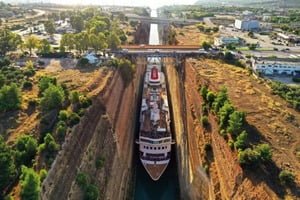
Stop At: Corinth Canal.
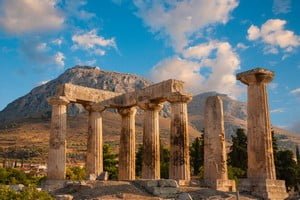
Stop At: Ancient Corinth (Archaia Korinthos);
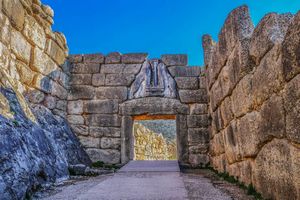
Stop At Mycenae:

Stop At Nafplion:
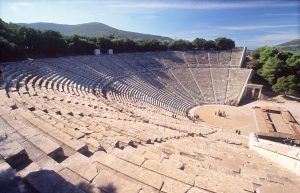
Stop At: Epidaurus theater.
The theater
DEPARTURE | RETURN
INCLUDED | EXCLUDED
IMPORTANT NOTES
CANCELLATION POLICY

